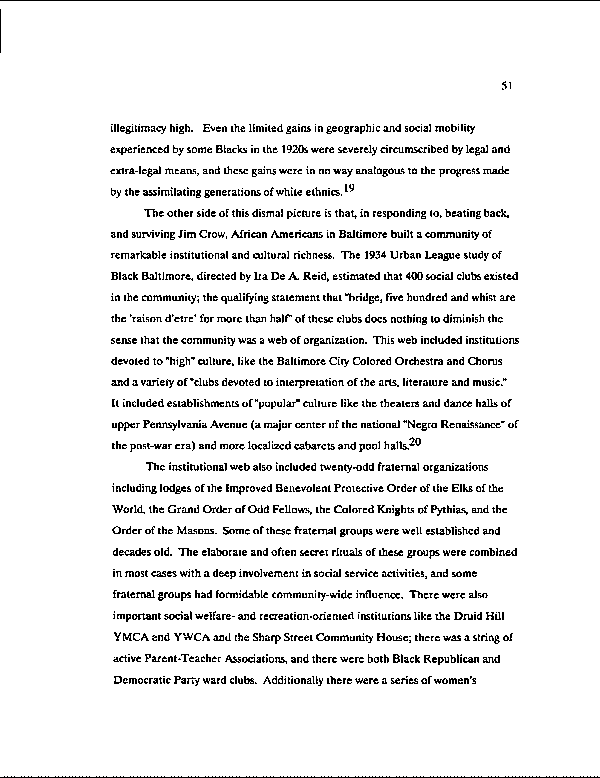|
51
illegitimacy high. Even the limited gains in geographic and social mobility
experienced by some Blacks in the 1920s were severely circumscribed by legal and
extra-legal means, and these gains were in no way analogous to the progress made
by the assimilating generations of white ethnics.
The other side of this dismal picture is that, in responding to, beating back,
and surviving Jim Crow, African Americans in Baltimore built a community of
remarkable institutional and cultural richness. The 1934 Urban League study of
Black Baltimore, directed by Ira De A. Reid, estimated that 400 social clubs existed
in the community; the qualifying statement that "bridge, five hundred and whist are
the 'raison d'etre* for more than hair of these clubs does nothing to diminish the
sense that the community was a web of organization. This web included institutions
devoted to "high" culture, like the Baltimore City Colored Orchestra and Chorus
and a variety of "clubs devoted to interpretation of the arts, literature and music."
It included establishments of "popular" culture like the theaters and dance halls of
upper Pennsylvania Avenue (a major center of the national "Negro Renaissance" of
the post-war era) and more localized cabarets and pool halls.
The institutional web also included twenty-odd fraternal organizations
including lodges of the Improved Benevolent Protective Order of the Elks of the
World, the Grand Order of Odd Fellows, the Colored Knights of Pythias, and the
Order of the Masons. Some of these fraternal groups were well established and
decades old. The elaborate and often secret rituals of these groups were combined
in most cases with a deep involvement in social service activities, and some
fraternal groups had formidable community-wide influence. There were also
important social welfare- and recreation-oriented institutions like the Druid Hill
YMCA and YWCA and the Sharp Street Community House; there was a string of
active Parent-Teacher Associations, and there were both Black Republican and
Democratic Parry ward clubs. Additionally there were a series of women's
|

